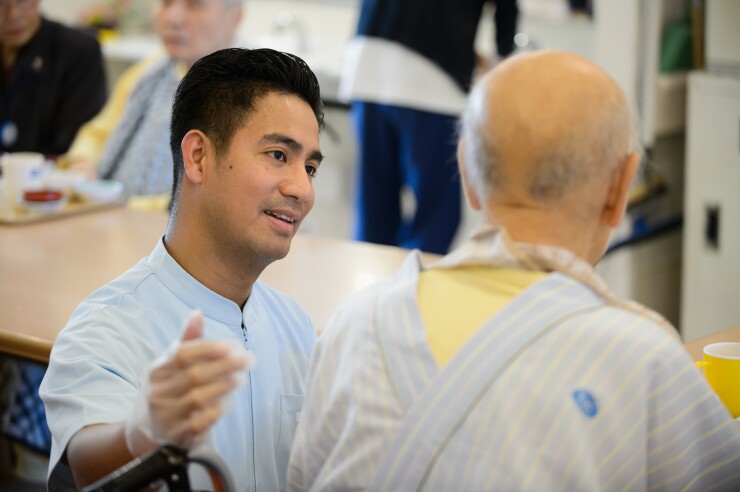The sandwich generation — those who have children and at least one living parent — is having a hard time saving for retirement because they are spending a good percentage of their money taking care of family members.
The Wells Fargo/Gallup investor and Retirement Optimism Index found that 47% of investors are in this predicament, and 32% of investors say they provide financial help to a child over the age of 18, a parent, or both. More than one-third of non-retired investors and 25% of retired investors give financial support to these close family members.

The telephone survey was conducted in February of 1,007 U.S. investors. It found that more than half of investors who aid an adult family member financially believe it is hindering their ability to save for their own retirement.
“That’s tough for them,” says Jon Graff, director of participant services at Wells Fargo Institutional Retirement and Trust. “It’s a tough decision and a heart-wrenching decision. Should I pay myself first and save for retirement or help my adult child or aging parent?”
Graff says it is really important for sandwich generation employees to have conversations about finances with their younger children and aging parents; to talk about the importance of savings and the importance of managing credit and debt.
“The survey did show that those conversations are happening,” he says. Seventy-five percent of respondents said they have had these conversations with their children under age 18, and 65% said they have talked to their parents about finances and their future.
“It’s important for the sandwich generation to make good holistic decisions that make the most sense for their family,” Graff says.
With a strong growth forecast and high salary averages across the country, these careers had the brightest future this year.
Many respondents are doing what they need to do to become financially sound in the future. A high percentage of respondents — 92% — say they pay all of their bills on time every month, and 77% say they are making progress paying down high-interest debt. Sixty-eight percent say they review their insurance needs every year and 61% say they check their credit score once a year. More than half (57%) contribute to an emergency fund to cover three to six months of expenses and 52% track all of their spending by category, according to Wells Fargo/Gallup.
Tracking spending is a good first start to financial independence, experts say.
“We think that is a real opportunity,” Graff says. “If you don’t really know how you are spending your money, it is hard to find where you are able to save. It is a good opportunity for people to understand their spending, put a budget and a plan in place and we think that will really help.”
The biggest takeaway from the survey, he adds, is that people really need help—including from their employers.
“They don’t know what to do. They have all these decisions they need to make around how much to save and how to invest and when to take Social Security and how to withdraw their nest egg and how to turn their retirement nest egg into income,” he says. “They really want advice and help with those decisions.”
Fifty-eight percent of investors say they get professional advice when making investment decisions for their defined contribution retirement plan, and women are more likely than men to seek out professional advice: 66% vs. 51%.
“We really believe that when people are making big decisions they want to validate them. We encourage that,” Graff says. “We encourage people to sit down and figure out where they are and figure out where they want to be and when they know where they are and where they want to be it makes it simpler to figure out how to get there. Tracking spending, budgeting, putting a plan in place is how we can help them.”





